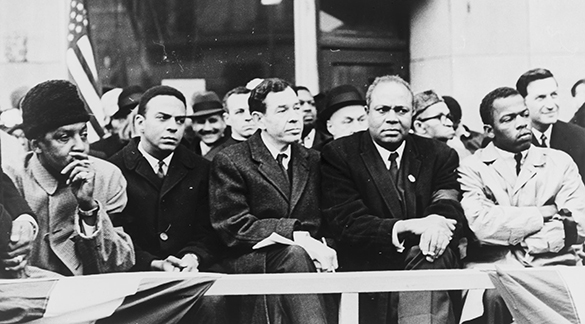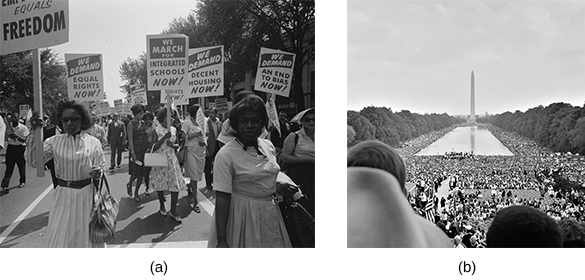| << Chapter < Page | Chapter >> Page > |
Students also took part in the 1961 “freedom rides” sponsored by the Congress of Racial Equality (CORE) and SNCC. The intent of the African American and white volunteers who undertook these bus rides south was to test enforcement of a U.S. Supreme Court decision prohibiting segregation on interstate transportation and to protest segregated waiting rooms in southern terminals. Departing Washington, DC, on May 4, the volunteers headed south on buses that challenged the seating order of Jim Crow segregation. Whites would ride in the back, African-Americans would sit in the front, and on other occasions, riders of different races would share the same bench seat. The freedom riders encountered little difficulty until they reached Rock Hill, South Carolina, where a mob severely beat John Lewis, a freedom rider who later became chairman of SNCC ( [link] ). The danger increased as the riders continued through Georgia into Alabama, where one of the two buses was firebombed outside the town of Anniston. The second group continued to Birmingham, where the riders were attacked by the Ku Klux Klan as they attempted to disembark at the city bus station. The remaining volunteers continued to Mississippi, where they were arrested when they attempted to desegregate the waiting rooms in the Jackson bus terminal.

The grassroots efforts of people like the Freedom Riders to change discriminatory laws and longstanding racist traditions grew more widely known in the mid-1960s. The approaching centennial of Abraham Lincoln’s Emancipation Proclamation spawned the slogan “Free by ’63” among civil rights activists. As African Americans increased their calls for full rights for all Americans, many civil rights groups changed their tactics to reflect this new urgency.
Perhaps the most famous of the civil rights-era demonstrations was the March on Washington for Jobs and Freedom, held in August 1963, on the one hundredth anniversary of Abraham Lincoln’s Emancipation Proclamation. Its purpose was to pressure President Kennedy to act on his promises regarding civil rights. The date was the eighth anniversary of the brutal racist murder of fourteen-year-old Emmett Till in Money, Mississippi. As the crowd gathered outside the Lincoln Memorial and spilled across the National Mall ( [link] ), Martin Luther King, Jr. delivered his most famous speech. In “I Have a Dream,” King called for an end to racial injustice in the United States and envisioned a harmonious, integrated society. The speech marked the high point of the civil rights movement and established the legitimacy of its goals. However, it did not prevent white terrorism in the South, nor did it permanently sustain the tactics of nonviolent civil disobedience.


Notification Switch
Would you like to follow the 'U.s. history' conversation and receive update notifications?